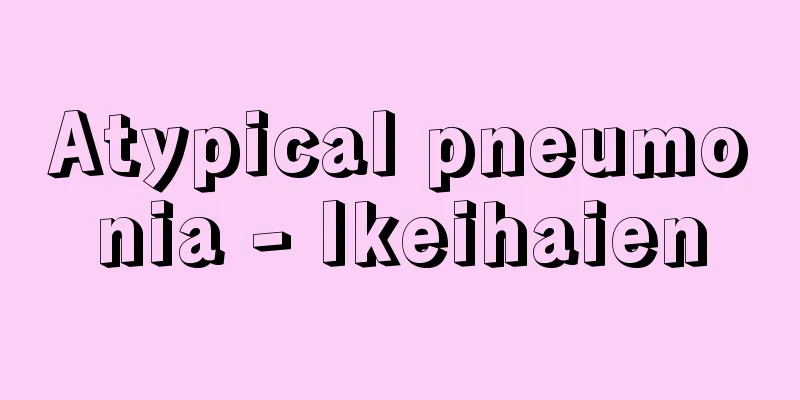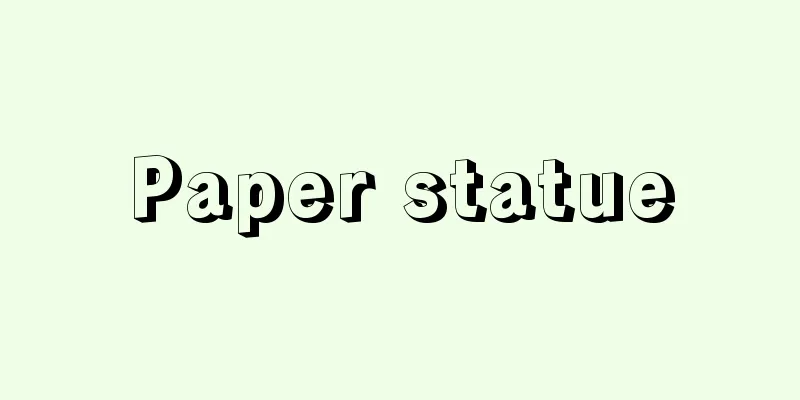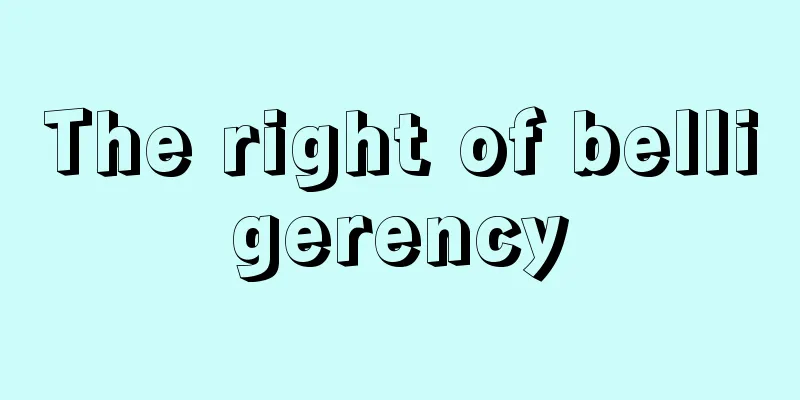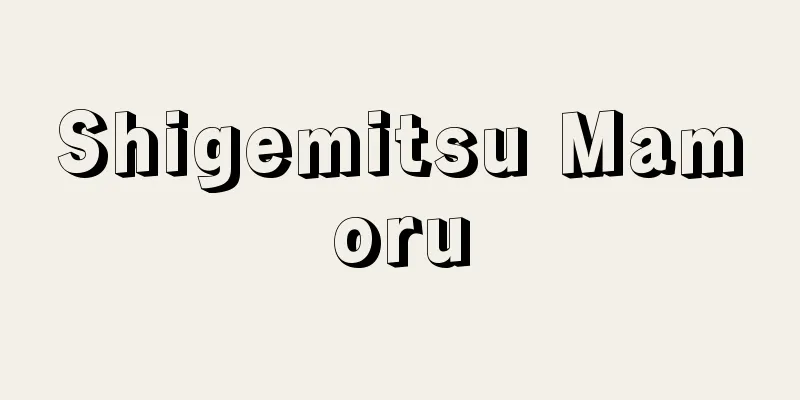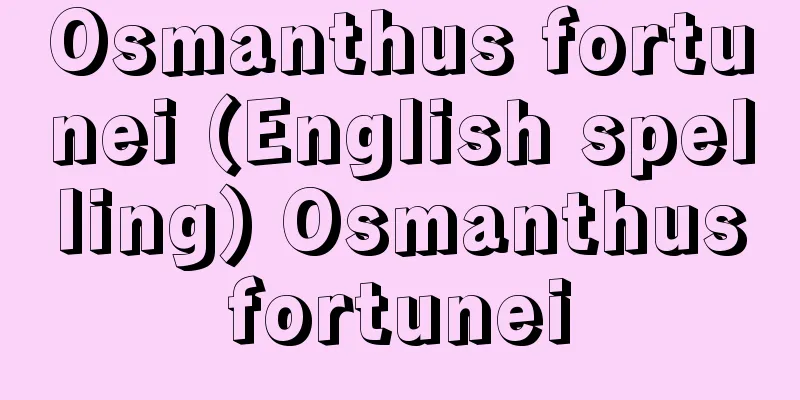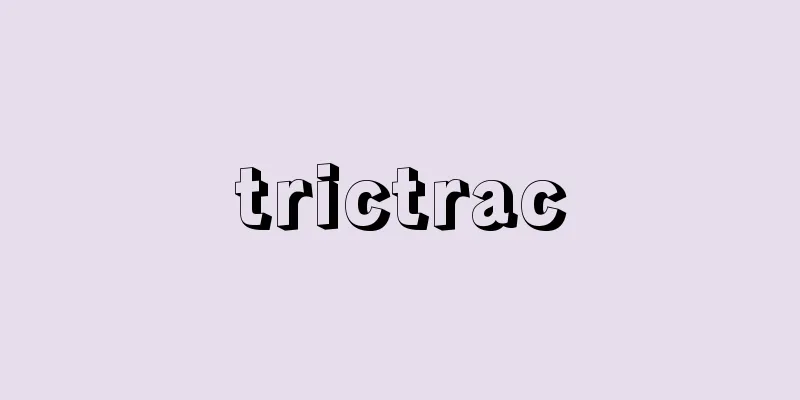Fisheries Law - Gyogyohō
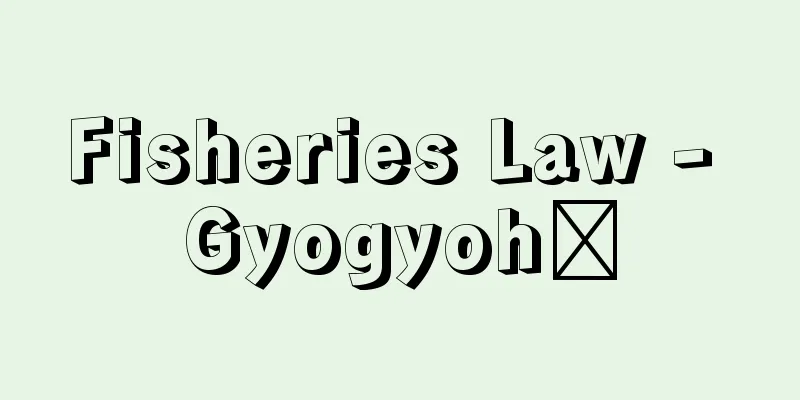
|
This law primarily stipulates fishing ground usage relationships, i.e. who may use the fishing grounds and how, and serves as the basis for various systems related to fisheries production. Fisheries Law before World War IIThe first Fisheries Law was enacted in Japan in 1901 (Meiji 34), and it was intended to unify and modernize the regulations that had merely recognized the basic fishing ground usage relationships (known as old customs) that had been formed by each feudal domain throughout the Edo period. The Fisheries Law of 1910 (known as the "Meiji Fisheries Law"; Meiji 43 Law No. 58), which was a comprehensive revision of the law enacted in 1901 (Meiji 34 Law No. 34), systematically reorganized the old prewar Fisheries Law. The basic contents of this law were related to the fishing rights system and fishermen's associations, and for the former, fishing rights were considered to be real rights and provisions related to land were applied mutatis mutandis, while old customs that had been passed down were stipulated from the standpoint of modern law, studying the relevant laws of other countries and accepting them. In other words, the right of local residents to join fishing in the waters off the coast of each village was licensed as an "exclusive fishing right," the practice of joining the waters off the coast of other villages was licensed as an "entry right" for other exclusive fishing rights, and among the fisheries that exclusively use fishing grounds individually, those that set fishing gear in a fixed location were licensed as "fixed fishing rights," those that cultivate fish, shellfish, and algae were licensed as "area fishing rights," and other fishing practices were licensed as "special fishing rights." There were two types of exclusive fishing rights: "customary exclusive fishing rights," which were licensed according to practice, and "coastal waters exclusive fishing rights," which were licensed only to "fishing associations" upon new application regardless of practice. For the latter, the provisions regarding the structure, functions, and joint ventures of fishing associations (federations) were expanded and improved, and became the basis for the subsequent development of the fishing cooperative system. [Katsuji Hiroyoshi September 15, 2015] Fisheries Law after World War IIThe Fisheries Law was enacted after the Second World War in 1949 (Showa 24) as part of the General Headquarters of the Supreme Commander for the Allied Powers (GHQ)'s policy of democratizing Japan, and along with the Fisheries Industry Cooperative Association Law enacted the previous year, it constituted the core of the reform of the fisheries system. With the enactment of this new Fisheries Law (Law No. 267 of 1949), all old fishing rights based on the Meiji Fisheries Law were abolished all at once with the government paying compensation, and a complete switch to new fishing rights was made. The compensation amount in the form of fishing rights certificates at this time was approximately 18 billion yen, an unprecedented amount at the time. The Fisheries Law after the Second World War states that its purpose is "to comprehensively utilize water surfaces through the operation of a fisheries adjustment organization mainly composed of fishermen and fishermen, thereby developing fishing productivity and at the same time democratizing fishing." Its basic structure consists of general provisions, fishing rights and piscine rights, designated fisheries, fisheries adjustment, fisheries adjustment committees, etc., use of land and land fixtures, inland water fishing, miscellaneous provisions, and penalties. The fishing rights system, which is the content of licensed fishing, was reorganized while inheriting the provisions of the Meiji Fisheries Law in its legal character and basic form, and many fundamental reforms were made, such as excluding absentee landlords and parasitic holding of fishing rights (prohibiting transfer and lease), and adding provisions that give top priority to fishing associations whose members are self-employed local fishermen. The scope of application of the Fisheries Law is general seas, rivers, and lakes that are used for public purposes (or are connected to them), and privately owned waters are excluded. Within territorial waters, it applies to foreigners as well as Japanese. On the other hand, the law applies to Japanese people regardless of their location, and in principle, it applies to fishing not only on the high seas but also within the territorial waters of other countries. The Fisheries Law has undergone several amendments to date, including the 1962 amendment which stipulated restrictions on fishing rights under cooperative-managed fishing rights and the creation of a designated fishing system. As a result of the establishment of the so-called 200-nautical-mile regime and the coming into force of the United Nations Convention on the Law of the Sea (ratified and put into force in Japan in 1996), the 2001 amendment established regional fisheries adjustment committees (for the Pacific Ocean, Sea of Japan, west Kyushu, Seto Inland Sea, etc.) and revised the aquaculture industries subject to specific area fishing rights and the priority order provisions for fixed-net fishing rights. [Katsuji Hiroyoshi September 15, 2015] "Reform of the Fisheries System: Commentary on the Provisions of the New Fisheries Law," edited by the Economic Affairs Division of the Fisheries Agency (1950, Nihon Keizai Shimbun)" ▽ "Legal Principles of the Meiji Fisheries Law, by Aozuka Shigeshi (Nagasaki University Fisheries Faculty Research Report No. 20, pp. 118-132, 1966, Nagasaki University Fisheries Faculty)" ▽ "Easy-to-Understand Series: Fisheries Law, by Hamamoto Yukio, 3 volumes (1989, Suisan-sha)" ▽ "Latest Article-by-Article Commentary on the Fisheries Law, by Fisheries Law Research Group (2008, Suisan-sha)" ▽ "New Edition : Detailed Explanation of the Fisheries Law, by Kaneda Yoshiyuki, 4th revised and expanded edition (2013, Seizando Shoten)" [References] | | | | | | | | |Source: Shogakukan Encyclopedia Nipponica About Encyclopedia Nipponica Information | Legend |
|
漁場をだれにどう使わせるかという漁場利用関係を中心に定めたもので、漁業生産に関する諸制度の基本をなす法律。 第二次世界大戦前の漁業法日本で漁業法が初めて制定されたのは1901年(明治34)で、それまでの江戸時代を通じ各藩ごとに形成されてきた基本的漁場利用関係(旧慣という)の追認的規定に対し、統一的・近代法的整備が行われることになった。この1901年に制定された法律(明治34年法律第34号)をさらに全面的に改正した1910年の漁業法(「明治漁業法」と称す。明治43年法律第58号)によって、戦前の旧漁業法の体系的整備がなされた。この基本的内容は漁業権制度と漁業組合に関するもので、前者については、漁業権を物権とみなして土地に関する規定を準用するとともに、これまで受け継がれてきた旧慣を諸外国の関係法を学びつつ近代法的に容認する立場から規定した。すなわち、各集落の地先水面における地元住民の入会(いりあい)漁業の権利は「専用漁業権」、他集落の地先水面への入会慣行は、他の専用漁業権に対する「入漁権」、個別的に漁場を独占利用する漁業のうち、漁具を一定の場所に定置するものは「定置漁業権」、魚貝藻類等を養殖するものは「区画漁業権」、その他の漁業慣行は「特別漁業権」としてそれぞれ免許されることになった。なお専用漁業権には、慣行に従って免許される「慣行専用漁業権」と、慣行によらず新たな申請によって「漁業組合」のみに免許される「地先水面専用漁業権」の2種類があった。後者については、漁業組合(連合会)の構成、機能、共同事業等に関する規定の拡充・整備が図られ、その後における漁業協同組合制度の発展の基礎となった。 [廣吉勝治 2015年9月15日] 第二次世界大戦後の漁業法第二次世界大戦後の漁業法制定は、1949年(昭和24)に連合国最高司令官総司令部(GHQ)の日本民主化政策の一環として実施されたもので、前年制定をみた水産業協同組合法と並んで漁業制度改革の中心的内容をなしている。この新漁業法(昭和24年法律第267号)の制定により、明治漁業法に基づく旧漁業権はすべて政府が補償金を交付して一斉に消滅させ、新漁業権への全面的な切換えが行われた。このときの漁業権証券による補償額は約180億円と当時としては破格の規模となった。 第二次世界大戦後の漁業法は、その目的を「漁業者及び漁業従事者を主体とする漁業調整機構の運用によつて水面を総合的に利用し、もつて漁業生産力を発展させ、あわせて漁業の民主化を図ること」にあるとしており、その基本的構成は、総則、漁業権及び入漁権、指定漁業、漁業調整、漁業調整委員会等、土地及び土地の定着物の使用、内水面漁業、雑則、および罰則となっている。免許漁業の内容となる漁業権制度については、その法的性格づけや基本形態において明治漁業法の規定を継承しつつ再編するとともに、不在地主的・寄生的な漁業権保有の排除(譲渡や賃貸借の禁止)、自営的な地元漁業者を構成員とする漁業者団体最優先の規定を付与する等多くの抜本的改革が図られた。また漁業法の適用範囲は、公共の用に供している(あるいは、これに連接している)一般の海、河川、湖沼であり、私有水面は範囲外になる。領海内では日本人に対すると同様外国人に対しても適用される。他方、日本人に対してはその所在のいかんを問わず適用されるのであり、公海はもちろん外国の領海内での漁業でも原則としてこの法の適用を受けることになる。 漁業法は今日まで数次の改正を経るが、重要なものとしては、組合管理漁業権における漁業行使権の制限や指定漁業制度の創設等を規定した1962年の改正、ならびにいわゆる200海里体制の定着と国連海洋法条約の発効(日本では1996年に批准、発効)を背景として、広域漁業調整委員会の設置(太平洋、日本海・九州西、瀬戸内海等)、特定区画漁業権の対象養殖業種や定置漁業権の優先順位規定の見直し等を図った2001年(平成13)の改正がある。 [廣吉勝治 2015年9月15日] 『水産庁経済課編『漁業制度の改革 新漁業法条文解説』(1950・日本経済新聞社)』▽『青塚繁志著「明治漁業法の法原理」(『長崎大学水産学部研究報告20号』pp.118~132・1966・長崎大学水産学部)』▽『浜本幸生著『早わかりシリーズ「漁業法」』全3巻(1989・水産社)』▽『漁業法研究会著『最新 逐条解説「漁業法」』(2008・水産社)』▽『金田禎之著『新編 漁業法詳解』増補4訂版(2013・成山堂書店)』 [参照項目] | | | | | | | | |出典 小学館 日本大百科全書(ニッポニカ)日本大百科全書(ニッポニカ)について 情報 | 凡例 |
Recommend
Plastic design method - Soseisekkeiho (English spelling) plastic design
This method is aimed at statically indeterminate f...
Asimidel
…There are many prehistoric rock paintings. The m...
Grafchaft
…In Latin it is called “comes.” Its jurisdiction ...
Naukenin - petitioner
A person who is registered in the land survey boo...
Eparchius Avitus
395 or 400-456 Western Emperor of the Roman Empire...
Masakiyo Kamata
Year of death: 11/01/11 (1160.2.11) Year of birth:...
Occupation - Senryo (English spelling) occupation
The bringing under the control of a military forc...
Imperial Conference - Gozenkaigi
This was the highest council held at the Imperial...
Schröder, S.
…Blessed with the supple movements of an all-roun...
Ohashi family - Ohashike
…Sansha was appointed as the administrator, and i...
dental hominid
...Therefore, their diet was similar, and they li...
Toyohira [town] - Toyohira
A former town in Yamagata County in the mid-west o...
Main road network
...By using advanced design standards such as acc...
Saihoji Temple
This temple is of the Tenryuji school of the Rinz...
Old calligraphy - Kohitsu
In a broad sense, it means handwriting of ancient...



